Global Market Comments
July 17, 2019
Fiat Lux
SPECIAL BIOTECH ISSUE
Featured Trade:
(FIVE BIOTECH STOCKS TO BUY AT THE BOTTOM),
(SPY), (VRTX), (JNJ), (ISRG), (CELG), (BMY), (AMGN), (ILMN)
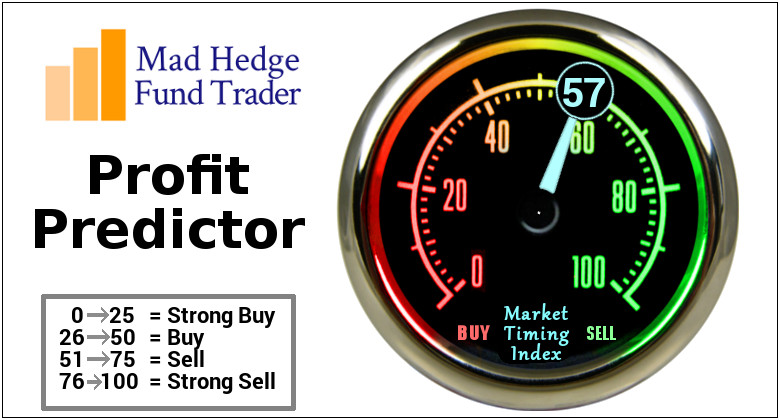
Global Market Comments
July 17, 2019
Fiat Lux
SPECIAL BIOTECH ISSUE
Featured Trade:
(FIVE BIOTECH STOCKS TO BUY AT THE BOTTOM),
(SPY), (VRTX), (JNJ), (ISRG), (CELG), (BMY), (AMGN), (ILMN)

No sector has been beaten, maligned, and abused more than the biotech sector in recent years. However, some of them are so bad they’ve become good, which piques my interest.
Investing in biotech stocks is not for the faint of heart. The road to developing and commercializing new drugs is long and riddled with hard battles, and an anxious investor won’t be able to sleep at night.
However, the returns offer incredible gains when everything falls into place. In this sector you’re almost buying lottery tickets rather than investing in shares.
In 1919, the term "biotechnology" was coined by a Hungarian agricultural engineer named Karl Ereky to define the merging of two industries: biology and technology. Almost a century later, Ereky's vision has been realized with thousands of products and services available in the biotech market today.
Despite the advancements of this industry though, the majority of the buy-and-hold investors choose to steer clear of biotech stocks -- and for sensible reasons.
It's no secret that investing in biotechnology firms can be unnervingly risky. Since its advent, investors have been regaled with horror stories of costly stage three drug trials going bust or plummeting stock prices due to the expiration of critical patents. Needless to say, these stories have soured would-be investors on the whole biotech world.
However, inadequate information and a lack of understanding of how the biotech industry really operates along with reliance on the performance of only a handful of biotech stocks may have caused investors to miss out on attractive risk-reward relationships. Not all biotech investments lead to disastrous results.
You may be surprised to learn that shares of the biotech industry has collectively gone up by approximately 70% in the past five years. This proves just how much these biotech companies rewarded their enduring. Success in biotech investing is simply a matter of buckling down to do your homework and applying a tad of common sense.
Throughout this decade, one sector has managed to outperform the S&P 500 index (SPY) in terms of total return annually: the healthcare sector. While there's no guarantee that healthcare stocks will go on to beat the S&P 500 in the years to come, the fact remains that people will continue to need medicines as well as healthcare services regardless of the country's economic status. The increasing reliance of the healthcare industry on technology has put the biotech industry smack dab in the center of all these demands.
I’ll give you some of my favorite plays in the sector.
Vertex Pharmaceuticals (VRTX)
Big-cap pharmaceutical company Vertex Pharmaceuticals Inc currently has the monopoly on the treatment of cystic fibrosis (CF) with three approved drugs out in the market, Kalydeco, Orkambi, and Symdeko, along with several promising products in the pipeline to target other auto-immune diseases.
In June, Vertex turned its sights on the genetic therapy part of the business via an expansion of its ongoing collaboration with CRISPR Therapeutics (CSPR). Vertex also purchased gene therapy firm Exonics Therapeutics to strengthen its foothold in this revolutionary technology.
Given the spectacular success of Vertex with CF treatments, its work with gene therapy is projected to bring in another blockbuster deal to the company. To ensure its monopoly in the CF market, Vertex has been aggressively seeking additional regulatory approvals to cater to younger CF patients. If the company succeeds, its target market of 75,000 CF patients would gain an additional 44,000.
Vertex is not limiting its efforts in this field though. To seal its position as the leader in CF treatments, the company is looking at developing triple-drug therapies as the next big development in their treatment plans. It has been performing clinical trials on three varying triple-drug combinations. If approved, these therapies would be able to address approximately 90% of the total number of CF patients.
As for the remaining 10% with no operational CF treatment, Vertex aims to address this via its work on gene editing alongside CRISPR Therapeutics. Aside from CF, the two companies have commenced clinical studies on applying gene-editing therapies to treat rare blood diseases and sickle cell disease.
Overall, Vertex is a certified outperformer in the world of big-cap biotech and provides good value to its shareholders.
Johnson & Johnson(JNJ)
Johnson & Johnson (JNJ) is one of the most attractive names in the biotech space. While the lawsuits against it involving alleged toxic baby powder endanger (JNJ)’s equity, the company is still hailed as one of the most notable innovators in the healthcare ecosystem.
The company recently disclosed its progress in developing an AIDS vaccine. Although the negative headlines about the company can be a cause of concern to some, it could turn out to be a win-win situation for long-term investors who can then take advantage of the bargain basement stock price.
(JNJ) has reinforced its stronghold in the fields of neuroscience, oncology, and immunology with these three areas generating over 72% of the company’s drug sales in the first quarter. In fact, (JNJ) recently received an FDA approval on its myeloma drug Dexamethasone. Its collaborative work on cancer treatment with Celgene’s (CELG) Revlimid and its own Darzalex received the FDA’s green light as well.
Apart from developing new treatments and medications, (JNJ) is also moving forward in the development of its robotic sector. Earlier this year, the company purchased robotic surgery firm Auris Health for $3.4 billion in an effort to dethrone the current sector leader Intuitive Surgical (ISRG).
With all that is in its drug and services pipeline along with its earlier successes, (JNJ) raised its 2019 outlook despite its legal woes. The biopharma giant now anticipates a sales growth of 2.5% to 3.5%. Meanwhile, its adjusted earnings per share now stands somewhere in the range of $8.53 and $8.63 per share.
Celgene (CELG)
Celgene (CELG) is one biotech stock that you can get on the cheap. It offers shares trading at only 7.4 times expected earnings.
With its shares trading well below the total book value courtesy of the pending acquisition by Bristol-Myers Squibb (BMY), investors would be hard-pressed not to take advantage of the opportunity to add a company leading in the development of treatments for cancer, blood disorders, and immunological conditions.
Aside from the looming acquisition, another reason for Celgene’s dirt-cheap stock involves the decision to sell blockbuster immunology drug Otezla to allow Bristol-Myers Squibb to appease the Federal Trade Commission’s concerns over the deal. Nonetheless, Celgene’s remaining drugs still perform well in the market.
Its blood cancer drugs, Revlimid and Pomalyst, are the leading go-to drug for multiple myeloma. Revlimid has been approved to treat two additional rare blood diseases, myelodysplastic syndromes and mantle cell lymphoma. Another winner in Celgene’s lineup is its solid tumor drug Abraxane, which has been approved for advanced breast cancer treatment along with non-small-cell lung cancer and advanced pancreatic cancer.
Celgene’s pipeline is loaded with promising winners as well, with myelofibrosis drug Fedratinib and multiple sclerosis treatment Ozanimod up for FDA approval this year. Three additional blood disease drugs including Luspatercept are also in the works along with a cell therapy called Liso-cel, which engineers the body’s immune cells to target particular types of cancer. Celgene’s work with Bluebird Bio is expected to bring another cell therapy procedure called bb2121, which is anticipated to bolster the biopharma firm’s dominance on the multiple myeloma market.
Amgen (AMGN)
With its ability to flex its financial muscles at will, Amgen (AMGN) has accumulated nearly $30 billion in cash and investments. In the past four years, it has recorded an average annual net profit of roughly $6 billion.
The company has achieved tremendous success in developing groundbreaking technology and edging out its competition courtesy of its innovative treatments like the post-chemo therapy called Neulasta. Its cholesterol drug Repatha and arthritis medication Enbrel are both impressive performers in the market as well.
Despite its aggressive drive to acquire small biopharma firms, Amgen is actually a pretty safe investment. Throughout the years, the company has made a conscious effort to diversify its portfolio to steer clear of dependence on a single product.
In fact, no single drug provides more than one-fourth of Amgen’s total income. Among its products, only two drugs generate over a tenth of its revenue. This pattern of revenue diversity doesn’t stop here either as Amgen’s pipeline has nine Phase 3 trials and an additional five Phase 2 trials.
Illumina (ILMN)
One of the incredible developments in healthcare involves the unlocking of the secrets of the human genome – and Illumina (ILMN) has been widely recognized as the leader in this field. In fact, this company has performed more than 90% of all gene sequencing procedures ever recorded.
Branded as the “gold standard” for gene sequencing, Illumina’s highly accurate technology has turned the company into one of the leaders in the biotech space. Illumina is projected to dominate the industry for a very long time.
More importantly, Illumina has managed to make these treatments affordable. Using Illumina’s technology, the cost of human genome therapy has been remarkably cut from a staggering $100 million back in 2002 to an affordable $1,000 today.
Despite its potential, Illumina released lower-than-expected revenue guidance for this year. However, its track record indicates that the company has the tendency to underpromise but overdeliver.
Its revolutionary gene sequencing equipment NovaSeq has made remarkable progress since its availability in 2017 and has yet to reach its peak. Illumina has been on the lookout for high-growth markets currently in their infancy in an effort to become a pioneering force in other fields.
A good example of this is Illumina’s move on noninvasive prenatal testing (NIPT), which has recently gained popularity among patients. The company released an updated and more powerful version of its fetal genome detector system VeriSeq this year. This technology offers the quickest processing time compared to its rivals.
Illumina is also looking to utilize gene sequencing to bolster cancer research efforts and screening through its TruSight Oncology 500, which is a molecular test used to detect lung cancer. Since its release in 2018, the company has been seeking ways to expand TruSight’s application to include blood tests capable of detecting the very early stages of several types of cancer.
Another significant growth driver for Illumina is population genomics, with the United States, France, Singapore, England, and other countries already utilizing the company’s technology. Consumer genomics also shows a promising fiscal advancement for Illumina. To date, the company has been catering to major providers including Ancestry and 23andMe. Illumina even created its own genealogical spinoff called Helix.
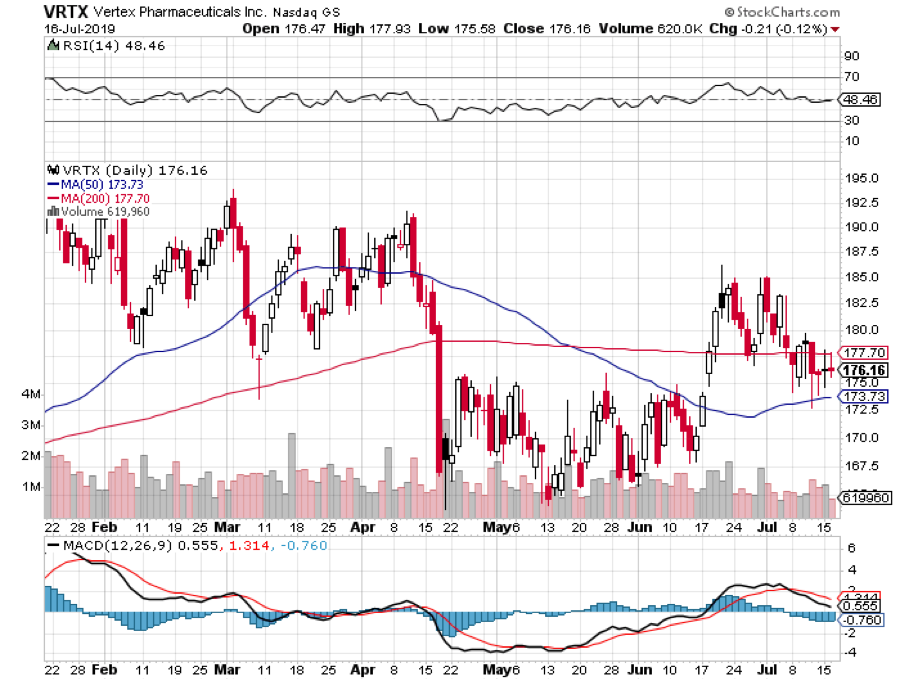
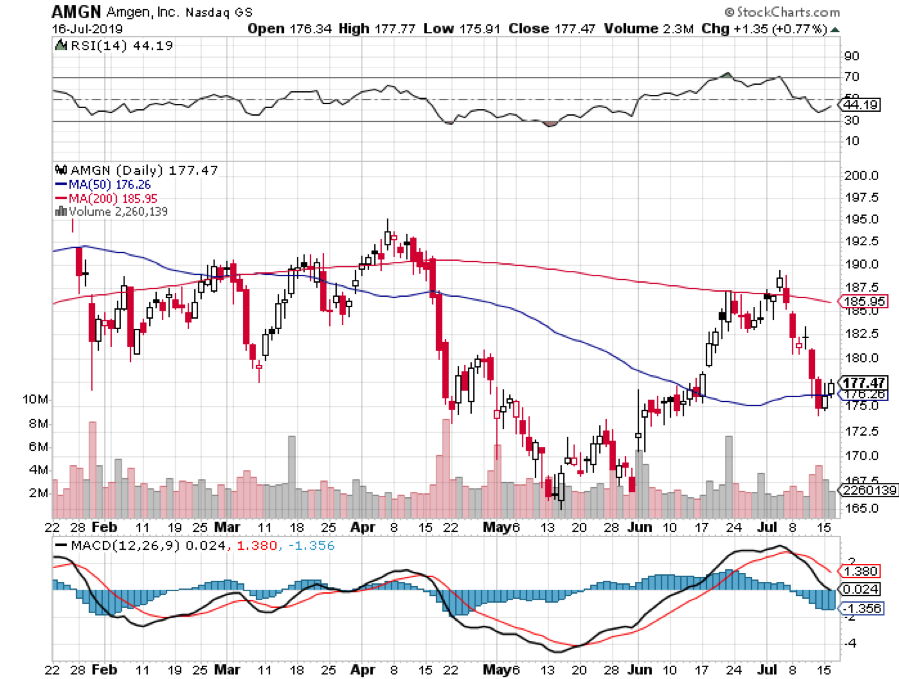
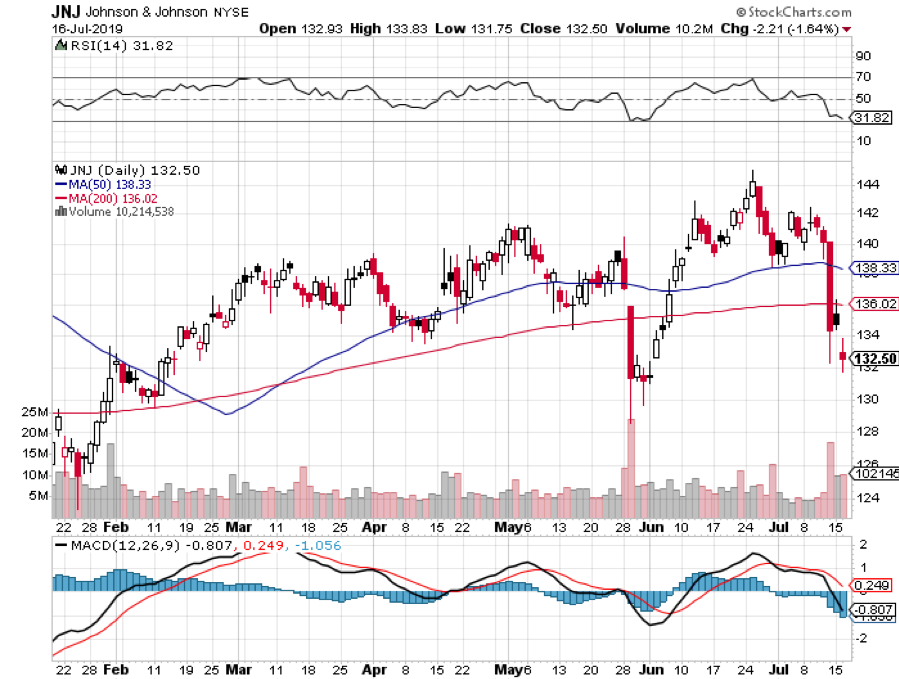
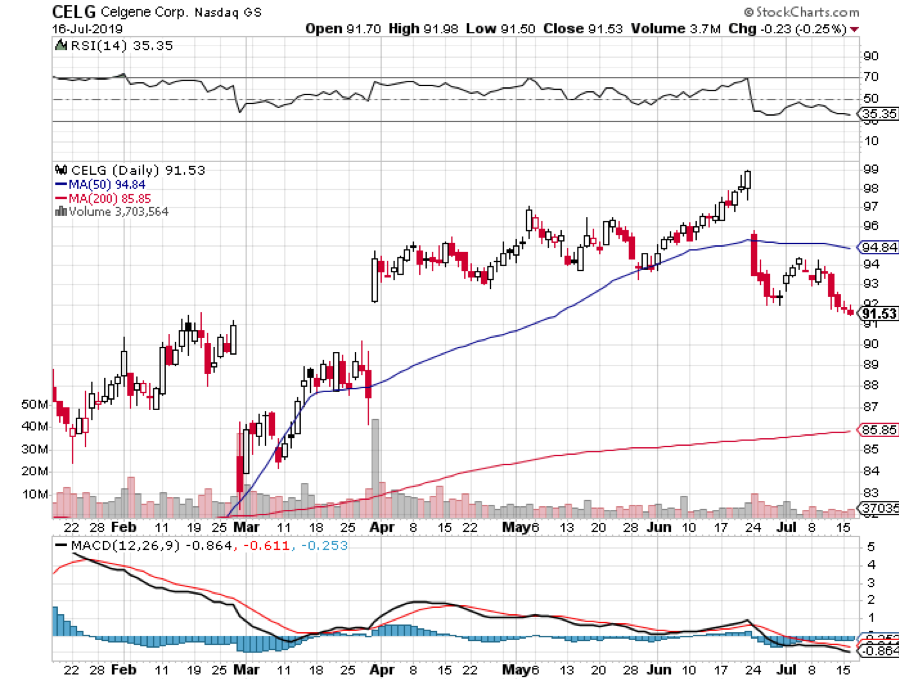
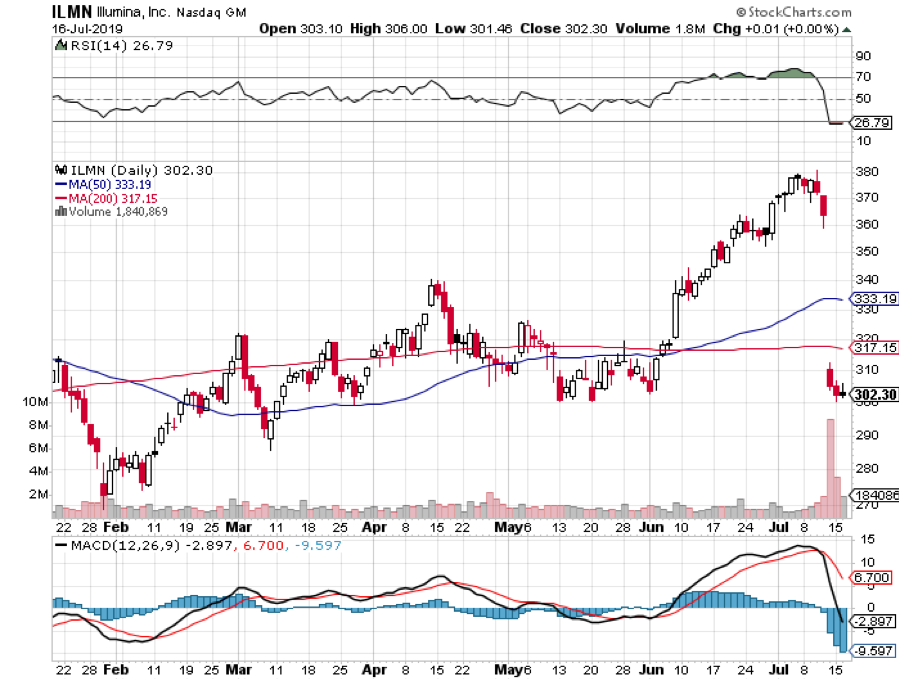

Global Market Comments
May 22, 2019
Fiat Lux
SPECIAL ARTIFICIAL INTELLIGENCE ISSUE
Featured Trade:
(HERE’S AN EASY WAY TO PLAY ARTIFICIAL INTELLIGENCE),
(BOTZ), (NVDA), (ISRG)
(FRIDAY, JULY 5 CAIRO, EGYPT GLOBAL STRATEGY DINNER)
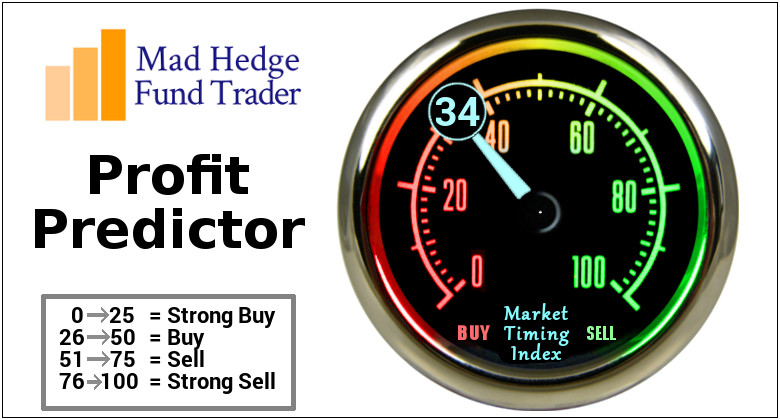
We are now in the throes of a market correction that could last anywhere from a couple of more week to a couple of months. So, generational opportunities are starting to open up in some of the best long term market sectors.
Suppose there was an exchange-traded fund that focused on the single most important technology trend in the world today.
You might think that I was smoking California’s largest export (it’s not grapes). But such a fund DOES exist.
The Global X Robotics & Artificial Intelligence ETF (BOTZ) drops a golden opportunity into investors’ laps as a way to capture part of the growing movement behind automation.
The fund currently has an impressive $2.2 billion in assets under management.
The universal trend of preferring automation over human labor is spreading with each passing day. Suffice to say there is the unfortunate emotional element of sacking a human and the negative knock-on effect to the local community like in Detroit, Michigan.
But simply put, robots do a better job, don’t complain, don’t fall ill, don’t join unions, or don’t ask for pay rises. It’s all very much a capitalist’s dream come true.
Instead of dallying around in single stock symbols, now is the time to seize the moment and take advantage of the single seminal trend of our lifetime.
No, it’s not online dating, gambling, or bitcoin. It’s Artificial Intelligence.
Selecting individual stocks that are purely exposed to AI is a challenging endeavor. Companies need a way to generate returns to shareholders first and foremost, hence, most pure AI plays do not exist right now.
However, the Mad Hedge Fund Trader has found the most unadulterated AI play out there. A real diamond in the rough.
The best way to expose yourself to this AI trend is through Global X Robotics & Artificial Intelligence ETF (BOTZ).
This ETF tracks the price and yield performance of ten crucial companies that sit at the forefront of the AI and robotic development curve. It invests at least 80% of its total assets in the securities of the underlying index. The expense ratio is only 0.68%.
Another caveat is that the underlying companies are only derived from developed countries. Out of the 10 disclosed largest holdings, seven are from Japan, two are from Silicon Valley, and one, ABB Group, is a Swedish-Swiss multinational headquartered in Zurich, Switzerland.
Robotics and AI walk hand in hand, and robotics are entirely dependent on the germination prospects of AI. Without AI, robots are just a clunk of heavy metal.
Robots require a high level of AI to meld seamlessly into our workforce. The stronger the AI functions, the stronger the robot’s ability, filtering down to the bottom line.
AI-embedded robots are especially prevalent in military, car manufacturing, and heavy machinery. The industrial robot industry projects to reach $80 billion per year in sales by 2024 as more of the workforce gradually becomes automated.
The robotic industry has become so prominent in the automotive industry that they constitute greater than 50% of robot investments in America.
Let’s get the ball rolling and familiarize readers of the Global Trading Dispatch with the top 5 weightings in the underlying ETF (BOTZ).
Nvidia (NVDA)
Nvidia Corporation is a company I often write about as their main business is producing GPU chips for the video game industry.
This Santa Clara, California-based company is spearheading the next wave of AI advancement by focusing on autonomous vehicle technology and AI-integrated cloud data centers as their next cash cow.
All these new groundbreaking technologies require ample amounts of GPU chips. Consumers will eventually cohabitate with state of the art IOT products (internet of things), fueled by GPU chips coming to mass market like the Apple Homepod.
The company is led by genius Jensen Huang, a Taiwanese American, who cut his teeth as a microprocessor designer at competitor Advanced Micro Devices (AMD).
Nvidia constitutes a hefty 8.70% of the BOTZ ETF.
To visit their website, please click here.
Yaskawa Electric (Japan)
Yaskawa Electric is the world's largest manufacturer of AC Inverter Drives, Servo and Motion Control, and Robotics Automation Systems, headquartered in Kitakyushu, Japan.
It is a company I know well, having covered this former zaibatsu company as a budding young analyst in Japan 45 years ago.
Yaskawa has fully committed to improving global productivity through automation. It comprises the 2nd largest portion of BOTZ at 8.35%.
To visit Yaskawa’s website, please click here.
Fanuc Corp. (Japan)
Fanuc was another one of the hot robotics companies I used to trade in during the 1970s, and I have visited their main factory many times.
The 3rd largest portion in the (BOTZ) ETF at 7.78% is Fanuc Corp. This company provides automation products and computer numerical control systems and is headquartered in Oshino, Yamanashi.
They were once a subsidiary of Fujitsu, which focused on the field of numerical control. The bulk of their business is done with American and Japanese automakers and electronics manufacturers.
They have snapped up 65% of the worldwide market in the computerized numerical device market (CNC). Fanuc has branch offices in 46 different countries.
To visit their company website, please click here.
Intuitive Surgical (ISRG)
Intuitive Surgical Inc (ISRG) trades on Nasdaq and is located in sun-drenched Sunnyvale, California.
This local firm designs, manufactures, and markets surgical systems and is completely industriously focused on the medical industry.
The company's da Vinci Surgical System converts surgeon's hand movements into corresponding micro-movements of instruments positioned inside the patient.
The products include surgeon's consoles, patient-side carts, 3D vision systems, da Vinci skills simulators, da Vinci Xi integrated table motions.
This company comprises 7.60% of BOTZ. To visit their website, please click here.
Keyence Corp (Japan)
Keyence Corp is the leading supplier of automation sensors, vision systems, barcode readers, laser markers, measuring instruments, and digital microscope.
They offer a full array of service support and closely work with customers to guarantee full functionality and operation of the equipment. Their technical staff and sales teams add value to the company by cooperating with its buyers.
They have been consistently ranked as the top 10 best companies in Japan and boast an eye-popping 50% operating margin.
They are headquartered in Osaka, Japan and make up 7.54% of the BOTZ ETF.
To visit their website please click here.
(BOTZ) does have some pros and cons. The best AI plays are either still private at the venture capital level or have already been taken over by giant firms like NVIDIA.
You also need to have a pretty broad definition of AI to bring together enough companies to make up a decent ETF.
However, it does get you a cheap entry into many of the illiquid foreign names in this fund.
Automation is one of the reasons why this is turning into the deflationary century and I recommend all readers who don’t have their own robotic-led business pick up some Global X Robotics & Artificial Intelligence ETF (BOTZ).
And by the way, the entry point right here on the charts is almost perfect.
To learn more about (BOTZ), please visit their website by clicking here.

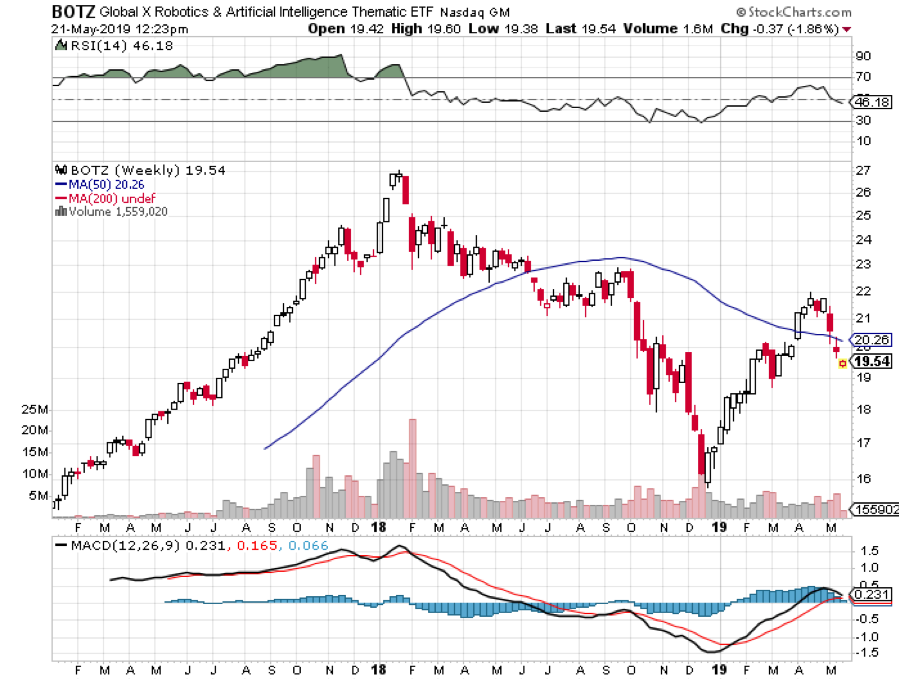

Mad Hedge Technology Letter
March 11, 2019
Fiat Lux
Featured Trade:
(THE BEST TECH PLAY IN HEALTHCARE),
(ISRG), (GOOGL), (JNJ)
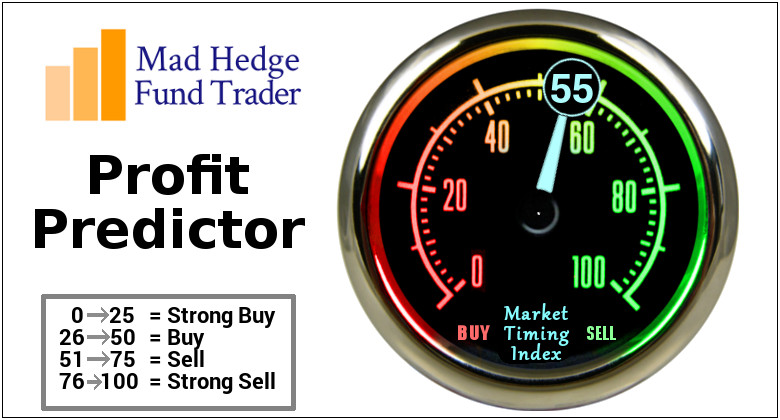
Seeking for a great long-term buy and hold tech name?
Then look no further than Intuitive Surgical, Inc. (ISRG).
Intuitive Surgical develops and produces robotic products designed to enhance clinical outcomes for patients through minimally invasive surgery, its most well-known product is the da Vinci surgical system.
Healthcare is one sector that I have rarely touched on, but not only will this cross-pollination with tech serve a social good, investors have a chance to rake in future profits.
The da Vinci systems and Intuitive Surgical are the best of breed and have had almost zero competition in the past 20 years.
The systems are placed in operating room used for invasive surgery for various types of ailments from cancer to hernia, and the systems were successfully used over one million times for surgery last year.
The da Vinci systems aren’t cheap – they cost $1.5 million and the customers, usually the hospitals, buy the add-ons of extra parts and supplies that inflate the price another $1,900.
As you would expect, net profit margins are compelling, being over 30% which e-commerce companies would give a left leg for translating into numbers that make the company incredibly profitable.
The story of the da Vinci systems starts way back in the 80s with the Defense Advanced Research Projects Agency (DARPA) hoping it could figure out how to offer surgeons the ability to operate remotely on soldiers wounded on the battlefield.
SRI International (SRI), an American nonprofit scientific research institute and organization took the painstaking time to develop the technology.
SRI's intellectual property was eventually acquired in 1994 and incorporated a new company named Intuitive Surgical Devices by the founders.
It took another 4 years for the FDA (Food and Drug Administration) to finally approve usage of the da Vinci Surgical System.
The first available surgery was for general laparoscopic surgery used to address gallbladder disease and gastroesophageal disease.
The next year saw another harvest of approvals with the FDA giving the green light to use the system for prostate surgery.
The approvals started to flow like a waterfall with thoracoscopic surgery, cardiac procedures performed with adjunctive incisions, and gynecologic procedures also approved by the FDA.
Fast forward to 2019 and the company couldn’t be financially healthier looking back at the year of 2018 in review.
Instruments & Accessories revenues came in at $1.96 billion comprising 52.7% of total revenue.
System sales crushed it with $1.13 billion, growth of 30.3% YOY and service sales amounted to $635.1 million up 17% YOY.
And in the latest quarter, Intuitive Surgical reported 19% YOY growth in worldwide da Vinci procedure volumes which contributed to bumping up revenue 18% YOY in the instruments and accessories segment.
The company is seeing the same type of success abroad with foreign revenues totaling $307 million, up 24% YOY.
Intuitive Surgical installed 115 systems in the previous quarter outside of America compared with 86 in the quarter before last.
55 of these new systems were installed in Europe, 31 in Japan, and nine in Brazil.
Procedure growth is forecasted to expand between 13-17%, fueled by U.S. general surgery and procedures.
Unfortunately, the stock sold off after earnings because adjusted operating expenses are expected to rise 20-28% reminding investors that the stock can’t always move up in a straight line.
The harm to operating margins is a tough pill to swallow in the short-term, but that does not take away the gloss from this leading tech company.
Intuitive Surgical plans to branch out from the da Vinci systems with its new Ion system, a robotic-assisted bronchoscope awaiting FDA clearance, a revolutionary way to kill cancer cells inside the lung.
After decades of unbridled market leadership, there are a few icebergs ahead in the distance in the form of competition.
Verb Surgical, a collaboration between Johnson & Johnson (JNJ) and Alphabet (GOOGL), will enter the healthcare robot surgery market in 2020.
Johnson & Johnson recently indicated it will splurge $3.4 billion in cash for Auris Health, a robotics startup with a device to perform lung biopsies that could compete with Intuitive Surgical’s Ion system.
Auris Health was approved by the FDA in March 2018 for this device that performs lung biopsies and Intuitive Surgical promptly sued citing patent infringement.
Auris Health was established by the co-founder of Intuitive Surgical Dr. Frederic Moll who pioneered the field of surgical robotics but left Intuitive in 2003 after 8 years there.
Intuitive could rub up on some more competition in the future, that is a stark possibility, but the pathway to profits are still open as the company rolls out different systems, services, and has the capital to fund new directions.
Hospitals that already have existing relationships with Intuitive will be less inclined to switch over to competing services if they are satisfied with the quality, service, and price points of the equipment.
This will help Intuitive build on the current strong momentum and ensure their products are in the pipeline to be adopted by the next batch of future demand.
Shares of the company are sky-high and expensive with a PE multiple of 55.
The big investment into R&D is in no doubt to fend off the potential competition around the corner, but I view that as a net positive.
It would be logical to wait for a pullback to buy shares, this one is a keeper.
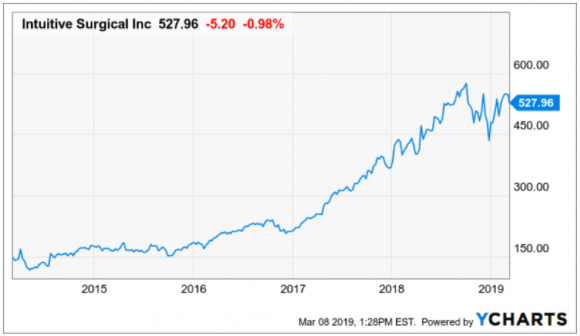
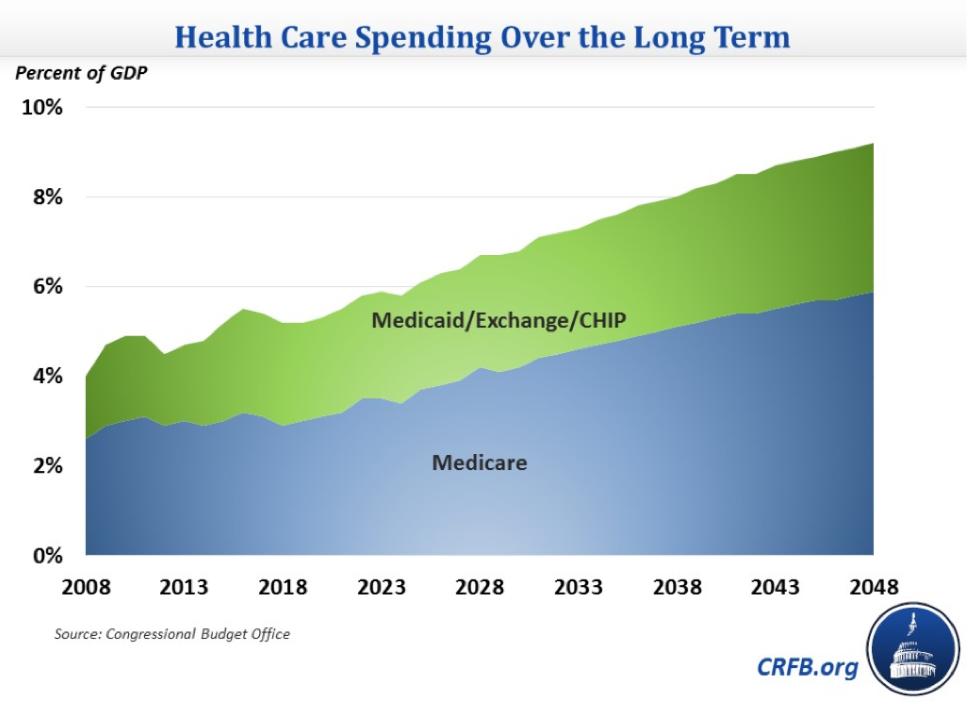

Mad Hedge Technology Letter
October 24, 2018
Fiat Lux
Featured Trade:
(HERE'S AN EASY WAY TO PLAY ARTIFICIAL INTELLIGENCE),
(BOTZ), (NVDA), (ISRG)

Suppose there was an exchange-traded fund that focused on the single most important technology trend in the world today.
You might think that I was smoking California's largest export (it's not grapes). But such a fund DOES exist.
The Global X Robotics & Artificial Intelligence ETF (BOTZ) drops a gilt-edged opportunity into investors' laps as a way to capture part of the growing movement behind automation.
The fund currently has an impressive $2.2 billion in assets under management.
The universal trend of preferring automation over human labor is mushrooming with each passing day. Suffice to say there is the unfortunate emotional element of sacking a human and the negative knock-on effect to the local community like in Detroit, Michigan.
But simply put, robots do a better job, don't complain, don't fall ill, don't join unions, or don't ask for pay rises. It's all very much a capitalist's dream come true.
Instead of dallying around in single stock symbols, now is the time to seize the moment and take advantage of the single seminal trend of our lifetime.
No, it's not online dating, gambling, or bitcoin, it's Artificial Intelligence.
Selecting individual stocks that are purely exposed to AI is a challenging endeavor. Companies need a way to generate returns to shareholders first and foremost, hence, most pure AI plays do not exist right now.
However, the Mad Hedge Fund Trader has found the most unadulterated AI play out there. A real diamond in the rough.
The best way to expose yourself to this AI trend is through Global X Robotics & Artificial Intelligence ETF (BOTZ).
This ETF tracks the price and yield performance of ten crucial companies that sit on the forefront of the AI and robotic development curve. It invests at least 80% of its total assets in the securities of the underlying index. The expense ratio is only 0.68%.
Another caveat is that the underlying companies are only derived from developed countries. Out of the 10 disclosed largest holdings, seven are from Japan, two are from Silicon Valley, and one, ABB Group, is a Swedish-Swiss multinational headquartered in Zurich, Switzerland.
Robotics and AI walk hand in hand, and robotics are entirely dependent on the germination prospects of AI. Without AI, robots are just a clunk of heavy metal.
Robots require a high level of AI to meld seamlessly into our workforce. The stronger the AI functions, the stronger the robot's ability, filtering down to the bottom line.
AI-embedded robots are especially prevalent in the defense industry, automobile manufacturing, and heavy industrial machinery. The industrial robot industry projects to reach $80 billion per year in sales by 2024 as more of the workforce gradually becomes automated.
The robotic industry has become so prominent in the automotive industry that they constitute greater than 50% of robot investments in America.
Let's get the ball rolling and familiarize readers of the Mad Hedge Technology Letter with the most influential weightings in the underlying ETF (BOTZ).
Nvidia (NVDA)
Nvidia Corporation is a company I often write about as their main business is producing GPU chips for the video game industry.
This Santa Clara, California based company is spearheading the next wave of AI advancement by focusing on autonomous vehicle technology and AI-integrated cloud data centers as their next cash cow.
All these new groundbreaking technologies require ample amounts of GPU chips. Consumers will eventually cohabitate with state of the art IOT products (internet of things), fueled by GPU chips, coming to mass market like the Apple Homepod.
The company is led by genius Jensen Huang, a Taiwanese-American who cut his teeth as a microprocessor designer at competitor Advanced Micro Devices (AMD).
Nvidia constitutes a hefty 6.60% of the BOTZ ETF.
To visit their website please click here.
Yaskawa Electric (Japan)
Yaskawa Electric is the world's largest manufacturer of AC Inverter Drives, Servo and Motion Control, and Robotics Automation Systems, headquartered in Kitakyushu, Japan.
It is a company I know well, having covered this former zaibatsu company as a budding young analyst in Japan 45 years ago.
Yaskawa has fully committed to improving global productivity through Automation. Yaskawa was recently switched out of the index in favor of an American newcomer John Bean Technologies specializing in the food processing and air transportation industries. Nevertheless, Yaskawa is still a company to have on your radar screen.
To visit Yaskawa's website, please click here.
Intuitive Surgical (ISRG)
Intuitive Surgical Inc (ISRG) trades on Nasdaq and is located in sun-drenched Sunnyvale, California.
This local firm designs, manufactures, and markets surgical systems and is industriously focused on the medical industry.
The company's da Vinci Surgical System converts the surgeon's hand movements into corresponding micro-movements of instruments positioned inside the patient.
The products include surgeon's consoles, patient-side carts, 3-D vision systems, da Vinci skills simulators, and da Vinci Xi integrated table motions.
This company comprises 7.71% of BOTZ. To visit their website, please click here.
Fanuc Corp. (Japan)
Fanuc was another one of the hit robotics companies I used to trade in during the 1970s and I have visited their main factory many times.
The 4thlargest portion in the (BOTZ) ETF at 6.11% is Fanuc Corp. This company provides automation products and computer numerical control systems, headquartered in Oshino, Yamanashi.
They were once a subsidiary of Fujitsu, which focused on the field of numerical control. The bulk of their business is done with American and Japanese automakers and electronics manufacturers.
They have snapped up 65% of the worldwide market in the computerized numerical device market (CNC). Fanuc has branch offices in 46 different countries.
To visit their company website, please click here.
Keyence Corp (Japan)
Keyence Corp is the leading supplier of automation sensors, vision systems, barcode readers, laser markers, measuring instruments, and digital microscopes.
They offer a full array of service support and closely work with customers to guarantee full functionality and operation of the equipment. Their technical staff and sales teams add value to the company by cooperating with its buyers.
They have been consistently ranked as the top 10 best companies in Japan and boast an eye-opening 50% operating margin.
They are headquartered in Osaka, Japan and make up 6.10% of the BOTZ ETF.
To visit their website please click here.
(BOTZ) does has some pros and cons. The best AI plays are either still private at the venture capital level taken over by the SoftBank Vision Fund wielding its war chest of $100 billion or a Silicon Valley mainstay such as Andreessen Horowitz.
You also need to have a pretty broad definition of AI to bring together enough companies to make up a decent ETF.
However, it does get you a cheap entry into many for the illiquid foreign names in this fund.
Automation is one of the reasons why this is turning into the deflationary century and I recommend all readers who don't own their own robotic led business, pick up some Global X Robotics & Artificial Intelligence ETF (BOTZ).
And by the way, the entry point right here on the charts is almost perfect.
To learn more about (BOTZ) please visit their website by clicking here.
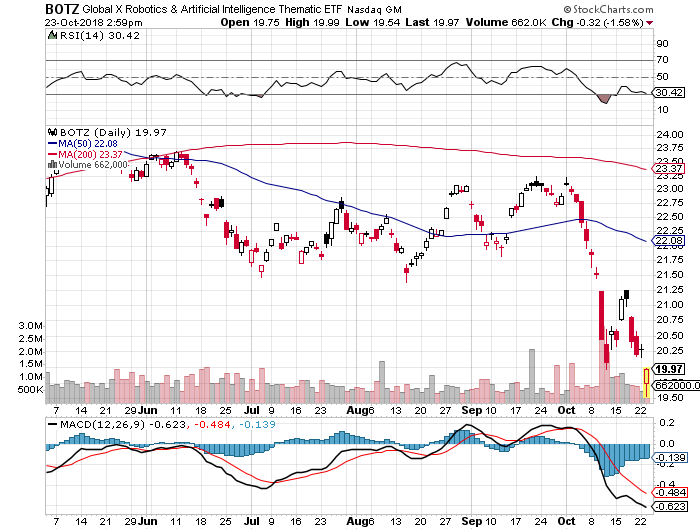
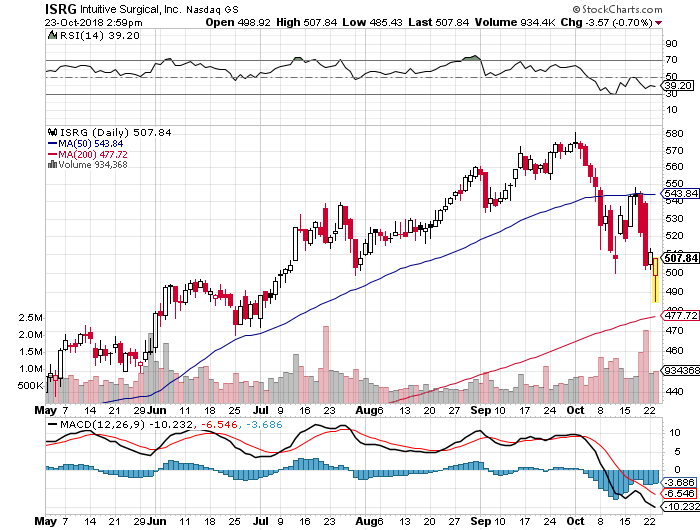
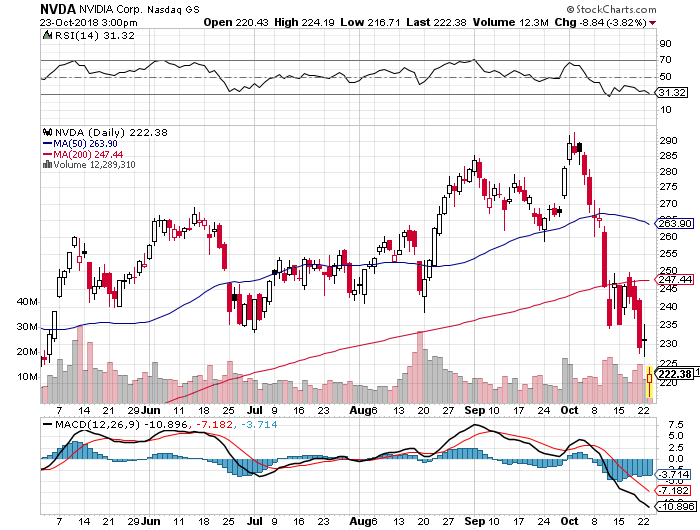
Global Market Comments
August 10, 2018
Fiat Lux
Featured Trade:
(AUGUST 8 BIWEEKLY STRATEGY WEBINAR Q&A),
(SPY), (TBT), (PIN), (ISRG), (EDIT), (MU), (LRCX), (NVDA),
(FXE), (FXA), (FXY), (BOTZ), (VALE), (TSLA), (AMZN),
(THE DEATH OF THE CAR),
(GM), (F), (TSLA), (GOOG), (AAPL)

Below please find subscribers' Q&A for the Mad Hedge Fund Trader August 8 Global Strategy Webinar with my guest and co-host Bill Davis of the Mad Day Trader.
As usual, every asset class long and short was covered. You are certainly an inquisitive lot, and keep those questions coming!
Q: What should I do about my (SPY) $290-295 put spread?
A: That is fairly close to the money, so it is a high-risk trade. If you feel like carrying a lot of risk, keep it. If you want to sleep better at night, I would get out on the next dip. The market has 100 reasons to go down and two to go up, the possible end of trade wars and continuing excess global liquidity, and the market is focusing on the two for now.
Q: What are your thoughts on the ProShares Ultra Short Treasury Bond Fund (TBT)?
A: Short term, it's a sell. Long term it's a buy. It's possible we could get a breakout in the bond market here, at the 3% yield level. If that happens, you could get another five points quickly in the TBT. J.P. Morgan's Jamie Diamond thinks we could hit a 5% yield in a year. I think that's high but we are definitely headed in that direction.
Q: What are your thoughts on the India ETF (PIN)?
A: It goes higher. It's been the best-performing emerging market, and a major hedge fund long for the last five years. The basic story is that India is the next China. Indicia is the next big infrastructure build-out. Once India gets regulatory issues out of the way, look for more continued performance.
Q: What are your thoughts on Intuitive Surgical (ISRG)?
A: Intuitive is a kind of microcosm in the market right now. It's trading well above a significant support level, which happens to be $508. I don't typically like Intuitive Surgical stock because the options are very inefficient, and therefore very pricey. I think, at this point, there is a bigger possibility of it breaking down than continuing to head higher. In other words, it's overbought. Buy long term, the sector has a giant tailwind behind it with 80 million retiring baby boomers.
Q: What are your thoughts on the entire chip sector, including Micron (MU), Lam Research (LRCX) and NVIDIA (NVDA)?
A: NVIDIA is the top of the value chain in the entire sector, and it looks like it wants to break to a new high. My target is $300 by the end of the year, from the current $240s. I think the same will happen with Lam Research (LRCX), which just had a massive rally. All three of these have major China businesses; China buys 80% of its chips from the U.S. You can do these in order in the value chain; the lowest value-added company is Micron, followed by Lam Research, followed by NVIDIA, and the performance reflects all of that. So, I think until we get out of the trade wars, Micron will be mired down here. Once it ends, look for it to get a very sharp upside move. Lam is already starting to make its move and so is NVIDIA. Long term, Lam and NVIDIA have doubles in them, so it's not a bad place to buy right here.
Q: You once recommended the Global X Robotics & Artificial Intelligence Thematic ETF (BOTZ) which is now down 10%, one of your few misses. Keep or sell?
A: Keep. It's had the same correction as the rest of Technology. All corrections in Technology are short term in nature--the long-term bull story is still there. (BOTZ) is a huge play on artificial intelligence and automation, so that is going to be with us for a long time, it's just enduring a temporary short-term correction right now, and I would keep it.
Q: What do you have to say about the CRISPR stocks like Editas Medicine Inc. (EDIT)?
A: The whole sector got slammed by a single report that said CRISPR causes cancer, which is complete nonsense. So, I would use this sell-off to increase your current positions. I certainly wouldn't be selling down here.
Q: What could soften the strong dollar?
A: Only one thing: a recession in the U.S. and an end to the interest-raising cycle, which is at least a year off, maybe two. Keep buying the U.S. dollar and selling the currencies (FXE), (FXY), (FXA) until then.
Q: What are your thoughts on Baidu and Alibaba?
A: I thought China tech would get dragged down by the trade wars, but they behaved just as well as our tech companies, so I'd be buying them on dips here. Again, if we do win the trade wars, these Chinese tech companies could rocket. The fundamental stories for all of them is fantastic anyway, so it's a good long-term hold.
Q: Have you looked at Companhia Vale do Rio Doce (VALE)? (A major iron ore producer)
A: No, I've kind of ignored commodities all this year, because it's such a terrible place to be. If we had a red-hot economy, globally you would want to own commodities, but as long as the recovery now is limited to only the U.S., it's not enough to keep the commodity space going. So, I would take your profits up here.
Q: With Tesla (TSLA) up $100 in two weeks should I sell?
A: Absolute. If the $420 buyout goes through you have $40 of upside. If it doesn't, you have $140 of downside. It's a risk/reward that drives like a Ford Pinto.
Q: How long will it take global QE (quantitative easing) to unwind?
A: At least 10 years. While we ended our QE four years ago, Europe and Japan are still continuing theirs. That's why stocks keep going up and bonds won't go down. There is too much cash in the world to sell anything.
Q: Apple (AAPL)won the race to be the first $1 trillion company. Who will win the race to be the first $2 trillion company?
A: No doubt it is will be Amazon (AMZN). It has a half dozen major sectors that are growing gangbusters, like Amazon Web Services. Food and health care are big targets going forward. They could also buy one of the big ticket selling companies to get into that business, like Ticketmaster.
Good Luck and Good trading
John Thomas
CEO & Publisher
The Diary of a Mad Hedge Fund Trader






Legal Disclaimer
There is a very high degree of risk involved in trading. Past results are not indicative of future returns. MadHedgeFundTrader.com and all individuals affiliated with this site assume no responsibilities for your trading and investment results. The indicators, strategies, columns, articles and all other features are for educational purposes only and should not be construed as investment advice. Information for futures trading observations are obtained from sources believed to be reliable, but we do not warrant its completeness or accuracy, or warrant any results from the use of the information. Your use of the trading observations is entirely at your own risk and it is your sole responsibility to evaluate the accuracy, completeness and usefulness of the information. You must assess the risk of any trade with your broker and make your own independent decisions regarding any securities mentioned herein. Affiliates of MadHedgeFundTrader.com may have a position or effect transactions in the securities described herein (or options thereon) and/or otherwise employ trading strategies that may be consistent or inconsistent with the provided strategies.
This site uses cookies. By continuing to browse the site, you are agreeing to our use of cookies.
OKLearn moreWe may request cookies to be set on your device. We use cookies to let us know when you visit our websites, how you interact with us, to enrich your user experience, and to customize your relationship with our website.
Click on the different category headings to find out more. You can also change some of your preferences. Note that blocking some types of cookies may impact your experience on our websites and the services we are able to offer.
These cookies are strictly necessary to provide you with services available through our website and to use some of its features.
Because these cookies are strictly necessary to deliver the website, refuseing them will have impact how our site functions. You always can block or delete cookies by changing your browser settings and force blocking all cookies on this website. But this will always prompt you to accept/refuse cookies when revisiting our site.
We fully respect if you want to refuse cookies but to avoid asking you again and again kindly allow us to store a cookie for that. You are free to opt out any time or opt in for other cookies to get a better experience. If you refuse cookies we will remove all set cookies in our domain.
We provide you with a list of stored cookies on your computer in our domain so you can check what we stored. Due to security reasons we are not able to show or modify cookies from other domains. You can check these in your browser security settings.
These cookies collect information that is used either in aggregate form to help us understand how our website is being used or how effective our marketing campaigns are, or to help us customize our website and application for you in order to enhance your experience.
If you do not want that we track your visist to our site you can disable tracking in your browser here:
We also use different external services like Google Webfonts, Google Maps, and external Video providers. Since these providers may collect personal data like your IP address we allow you to block them here. Please be aware that this might heavily reduce the functionality and appearance of our site. Changes will take effect once you reload the page.
Google Webfont Settings:
Google Map Settings:
Vimeo and Youtube video embeds:
